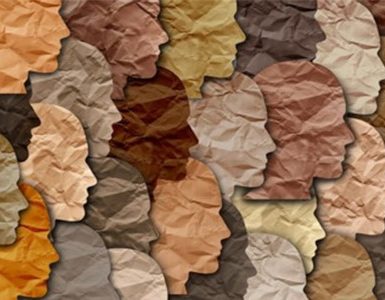If there is anyone thing that everyone in our increasingly divided world can agree on, it is that 2020 has been a bizarre year thus far. It has seen the ramping up and full force of the coronavirus pandemic, a new American epoch of antiracist activism, protests and riots, a slew of American lynchings, the increasing aggression and autocracy of the Chinese Communist Party, and an intellectual dystopia in which ice cream franchises are liable to have a better understanding of the reality of racism than professional political commentators. The dystopia in question, in all its peculiar glory, is of course the United States.
Ben & Jerry’s Ice Cream have perhaps been the year’s breakout stars in terms of corporate responses to police brutality and, particularly, the murder of George Floyd in Minneapolis, Minnesota this May. Following the murder and the international civil unrest that ensued, the company expanded on their previously established record of antiracist rhetoric with a series of articulated statements and detailed compilations of statistics and trends concerning American racial inequality that were posted across their social media accounts and on their official website. The really fascinating bit comes in when we compare Ben and Jerry’s research into and understanding of American race relations with popular conservative commentator Ben Shapiro’s comprehensive misunderstanding of the subject, which was made clear on the June 10th edition of The Ben Shapiro Show when the host denies the validity and existence of systemic racism in the United States.
To my admittedly lacking understanding of conservative media, Shapiro is meant to be a top talent. He was a notable columnist as a teenager, graduated from Harvard Law School in 2007, and today is a relatively well-known adult, but none of these facts kept him from failing to define or even acknowledge the reality of a term that entertains regular (and, right now, extreme) use in the present political parlance.
But never mind that one of the right’s most popular commentators is unaware of the decades of research dedicated to American racial inequality. Never mind that “systemic racism” is somehow abstruse terminology for a graduate of Harvard Law School. And never mind that the people we trust to expound the American political climate sometimes deny that the world is nicer to white people or think that systemic racism is but a “miasmatic, deliberately vague charge.” Let us focus instead on just how comprehensive Shapiro’s confusion is.
His stance is that his mortal enemy, the left, wants to “treat the institutions of the United States as though they are unjust even though today they are not unjust” when they mention systemic racism. Many would immediately take issue with his assertion that American institutions are not unjust, but it’s easy to understand why he believes this once he tries to defend his argument against the impact of redlining, and the discriminatory denial of services by federal and state institutions. In his view, redlining is irrelevant because it was “made illegal in 1968” by the Fair Housing Act. The nature of his misunderstanding is telling. Shapiro, who apparently has no reason to believe that America has racist institutions, thinks that things stop happening once they are “made illegal.” This explains his observation that “the only aspects of American life that are legally racist are legally racist on behalf of minority groups,” citing affirmative action programs as evidence. To Shapiro, only what is “legally racist” is fair game in the argument that America upholds racist institutions since anything illegally racist can’t “legally” hurt anyone. But what about those who are hurt in spite of the “law?”
Ben’s overemphasizing of legality in discussion of American race relations reveals his boyish worldview. And Ben is far from the first conservative commentator to insist that the disparities among racial lines in wealth, education, incarceration, etc., are more likely to be the result of “individual decision-making” than racism, which he does. They feel this way, I imagine, because, like Ben, they are of the opinion that American institutions today “are not unjust.” On the contrary, despite redlining being “made illegal,” Black and Latin Americans continue to be denied mortgage loans more than white Americans after controlling for nine socioeconomic factors, including income level, the median income of their neighborhood, and loan size, all of which seek to minimize the relevance of individual decision-making in the study by only comparing the experiences of those on a similar socioeconomic playing field. In 2010, it was found that between a Black American and a white American with the same credit score, the former is more likely to receive a subprime loan as opposed to one with a more agreeable interest rate. Let us at least assume that this Harvard graduate understands the importance of home ownership when considering the racial wealth gap.
On top of these facts, federal sentences received by Black men in America between 2012 and 2016 were 19.1% longer than those of “similarly situated” white men, meaning after the statistics were controlled for relevant factors like the offense and number of previous offenses, and even the ice cream guys know that, according to a 2014 U.S. Department of Education report, Black students are three times more likely than white students to be suspended or expelled for the same infraction. Where, pray tell, does decision-making factor into these statistics?
There are quite literally too many instances of racial disparity sourced from discriminatory practices in American institutions to fit into this article without severely exceeding my word limit, so I will close by explaining what superstar conservative pundit Shapiro believes to be too vague to have a real definition. Systemic or institutionalized racism, in the context of American race relations, describes the way that racially discriminatory practices persist and mutually reinforce each other in the country’s institutions as part of a singular, national white supremacist framework that functions to, as Ta-Nehisi Coates puts it, “ensure that that which all others achieve with maximal effort, white people (and particularly white men) achieve with minimal qualification.
The citing of systemic racism is meant to explain why between two similarly situated people (similar decisions, qualifications, socioeconomic backgrounds, etc.), one white and one Black, the Black person will have a harder time getting into a good neighborhood and school, at least somewhat impairing their potential for academic achievement; why, even if in a good school, the Black person will be penalized more harshly for infractions than the white person would, impairing academic potential further and increasing the likelihood of criminal activity; why Black children are almost twenty times as likely to be charged as adults than white children and why Black people serve almost twenty percent longer sentences than white people for committing the same crimes, and other issues that must royally confound poor Ben. “Wait,” we can almost hear him plead, “but racism is illegal!”


















Add comment